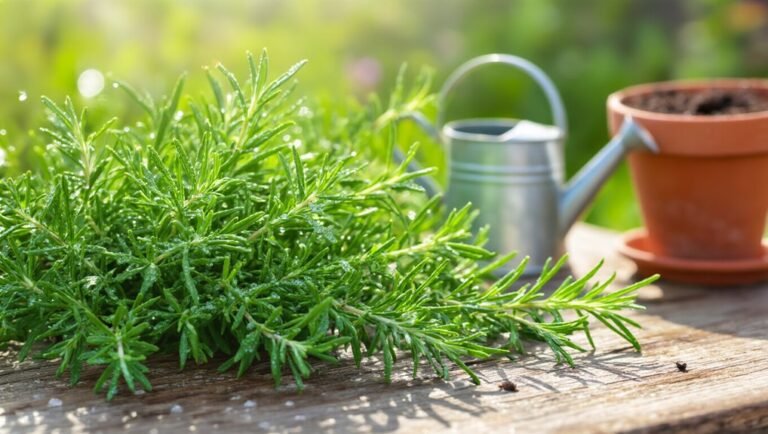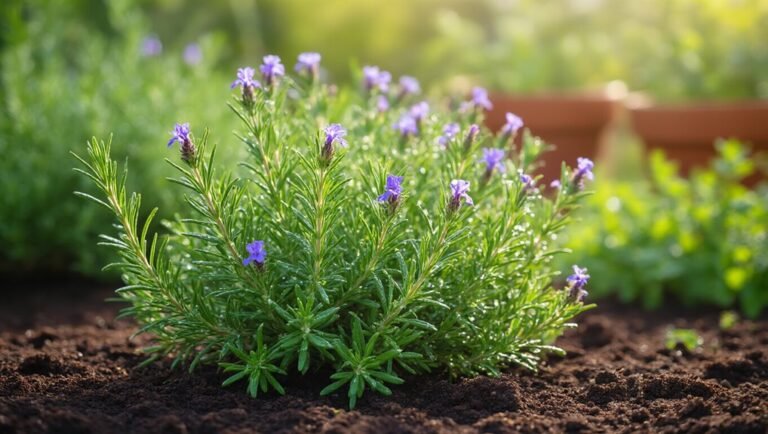To make flowers bloom beautifully, you need to know their life cycles and select flowers suited for your climate. Prepare your soil with organic matter and nutrients for healthy growth. Use proper watering techniques, ensuring deep moisture, and position them in locations with ample sunlight. Keep pests and diseases at bay with regular inspections and proper care. Prune and deadhead your plants to encourage more blooms. Continue exploring more tips for thriving flowers ahead!
Key Takeaways
- Choose flowers suitable for your climate and hardiness zone to ensure optimal growth and blooming.
- Prepare soil by testing pH and nutrient levels, amending with organic matter for fertility.
- Water deeply and consistently, checking soil moisture to avoid overwatering or drought stress.
- Regularly deadhead spent blooms to encourage new flower production and redirect plant energy.
- Maintain good air circulation and pest control to create a supportive environment for healthy blooms.
Understanding Flower Life Cycles
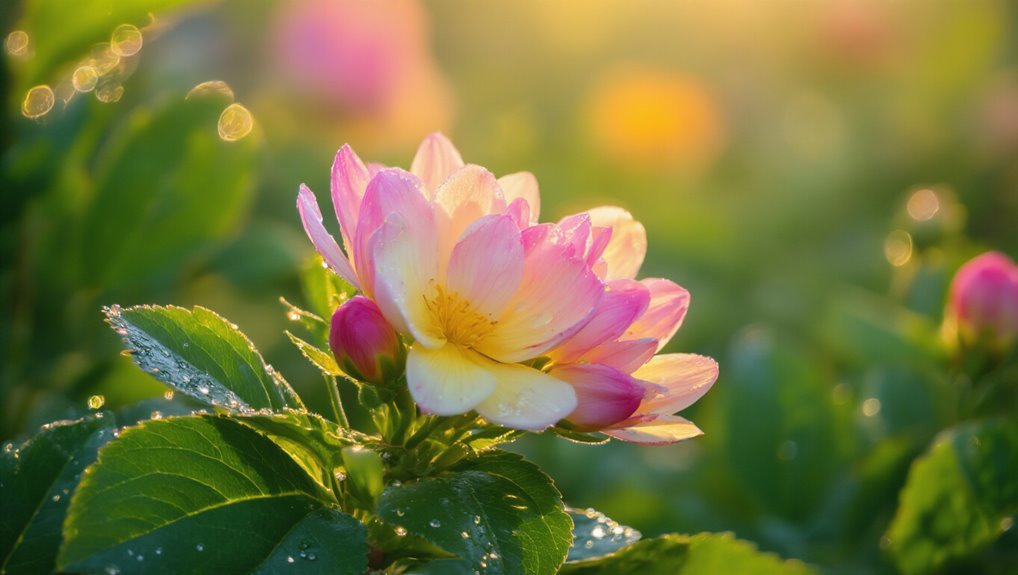
When you dive into the world of flowers, understanding their life cycles is essential for nurturing them effectively. Each flower goes through specific stages: germination, growth, flowering, and dormancy.
During germination, seeds absorb moisture, signaling the start of life. As they grow, they develop roots, stems, and leaves, all crucial for absorbing nutrients and sunlight. Healthy growth is also supported by enriching your garden soil with compost bins, which transform organic waste into nutrient-rich material for your plants.
The flowering stage is when you see vibrant blooms, signaling reproduction. Finally, dormancy allows plants to conserve energy during unfavorable conditions.
Knowing these stages helps you provide the right care at the right time. Whether it’s adjusting watering schedules or providing adequate sunlight, understanding a flower’s life cycle enables you to foster healthy, thriving plants that bloom beautifully. Many gardeners find that using seed starting kits makes the germination process more reliable and efficient, ensuring a strong foundation for future blooms.
Choosing the Right Flowers for Your Climate
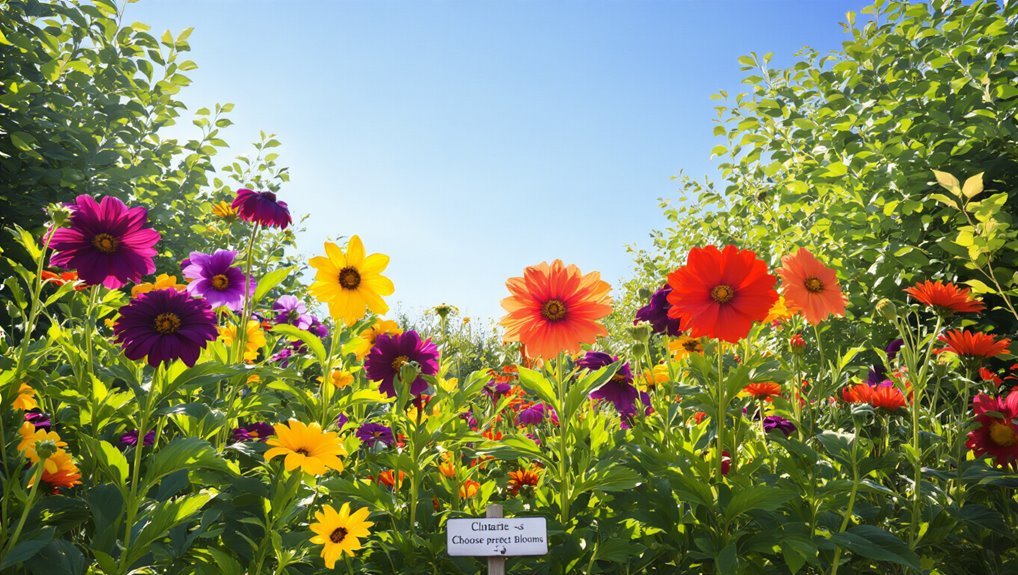
Understanding a flower’s life cycle helps you appreciate the importance of choosing the right varieties for your specific climate. Different flowers thrive in varying temperatures, humidity levels, and sunlight exposure.
Start by identifying your hardiness zone; this’ll guide you in selecting flowers that can endure your local conditions. For example, if you live in a warmer climate, consider heat-tolerant varieties like succulents or zinnias. Conversely, if you’re in a cooler area, opt for hardy perennials like asters or daisies. One way to keep your flowers healthy and soil moist is by using mulch in your garden, which helps regulate soil temperature and retain moisture.
Pay attention to flowering seasons too, ensuring a continuous bloom throughout the year. By choosing flowers suited to your climate, you’ll not only enhance your garden’s beauty but also promote healthier plants that require less maintenance. If you’re interested in adding both beauty and utility to your garden, consider planting edible flower seeds, which can provide stunning blooms as well as unique flavors for your kitchen.
Soil Preparation and Nutrient Requirements
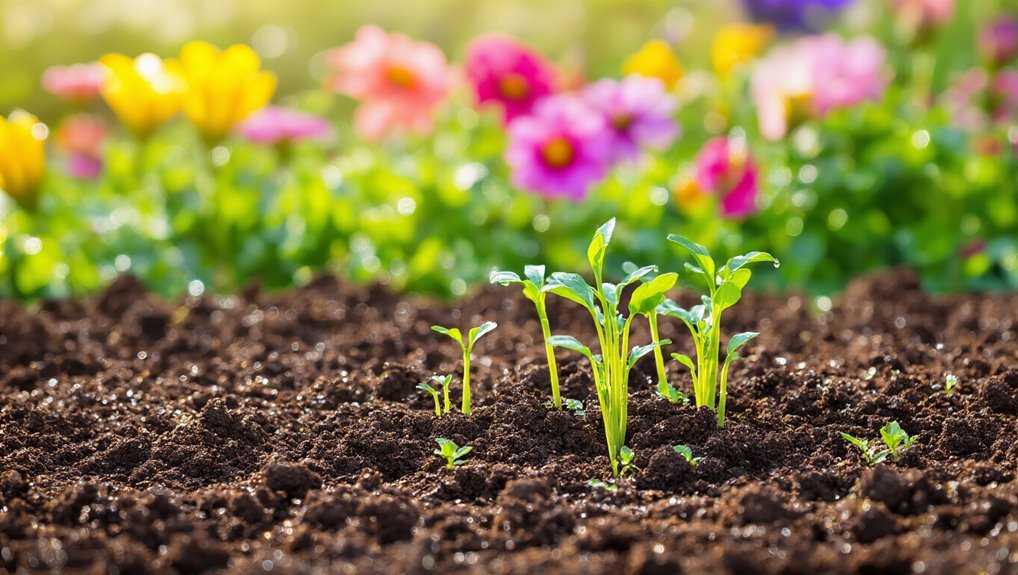
To ensure your flowers thrive, proper soil preparation and nutrient management are essential. Start by testing your soil’s pH and nutrient levels, aiming for a pH between 6.0 and 7.0 for most flowers. Amend the soil with organic matter like compost to improve structure and fertility.
When planting, mix in a balanced fertilizer to provide essential nutrients. Pay attention to specific flower requirements; some may need additional phosphorus for blooming. Many gardeners find it helpful to use Plant Fertilizer Tablets for a convenient and sustained release of nutrients directly to the roots.
As you prepare your bed, ensure good drainage to prevent root rot. Regularly check nutrient levels and replenish as needed, especially during the growing season. Choosing the best garden soil is crucial for supporting healthy root development and lush blooms.
Watering Techniques for Optimal Growth
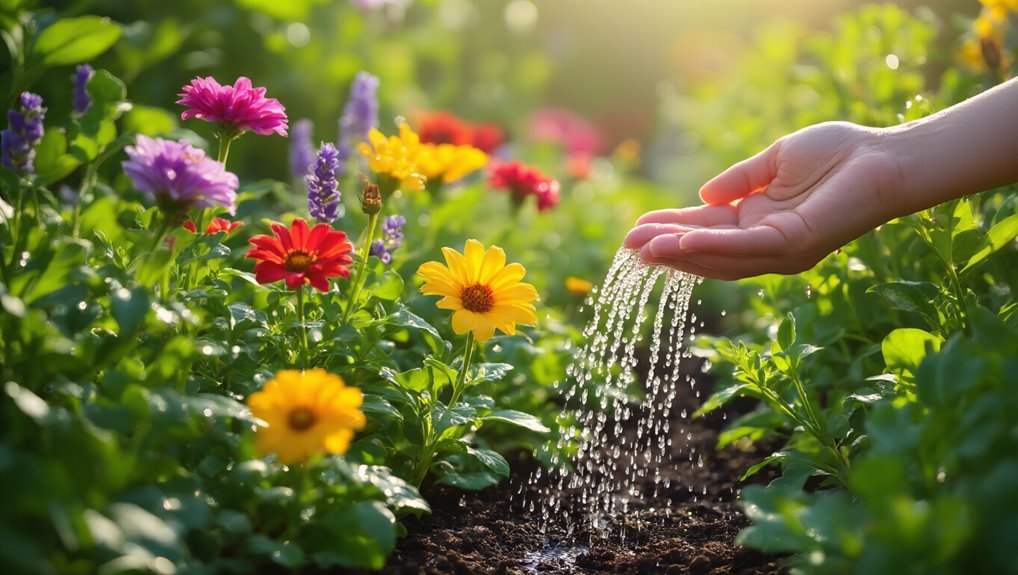
Although flowers need plenty of water to thrive, it’s crucial to strike a balance to avoid overwatering.
Start by checking the top inch of soil; if it’s dry, it’s time to water. Use a watering can or hose with a fine spray to gently moisten the soil without disrupting the roots. For flexible and efficient watering, garden hoses are an essential addition to every gardener’s toolkit.
Water early in the morning or late in the afternoon to minimize evaporation. Aim for deep watering, allowing moisture to reach the roots effectively.
Consider using mulch to help retain soil moisture and reduce the frequency of watering.
Remember, different flowers have different needs, so always tailor your approach based on the specific requirements of each type.
Using watering cans designed for gardeners can make it easier to control the flow and amount of water, ensuring your flowers receive just what they need.
With the right techniques, your flowers will flourish beautifully.
The Importance of Sunlight and Location

While flowers can thrive with proper watering, they also rely heavily on sunlight and the right location to truly flourish. Sunlight is essential for photosynthesis, enabling flowers to produce energy and grow. Most flowers need at least six hours of direct sunlight each day.
Therefore, it’s crucial to assess your garden’s sunlight exposure before planting. Trellising systems, such as Garden Trellis Netting, can help support climbing plants and maximize their exposure to sunlight.
When choosing a location, consider the specific needs of your flowers. Some prefer full sun, while others thrive in partial shade. Observe your garden throughout the day to identify the sunniest spots.
Additionally, ensure the soil is well-draining and rich in nutrients, as these factors complement sunlight in promoting healthy blooms. By selecting the right location and ensuring ample sunlight, you’ll set your flowers up for success.
For extra protection and support, consider using garden netting to shield delicate blooms from pests and harsh weather.
Pest Control and Disease Prevention
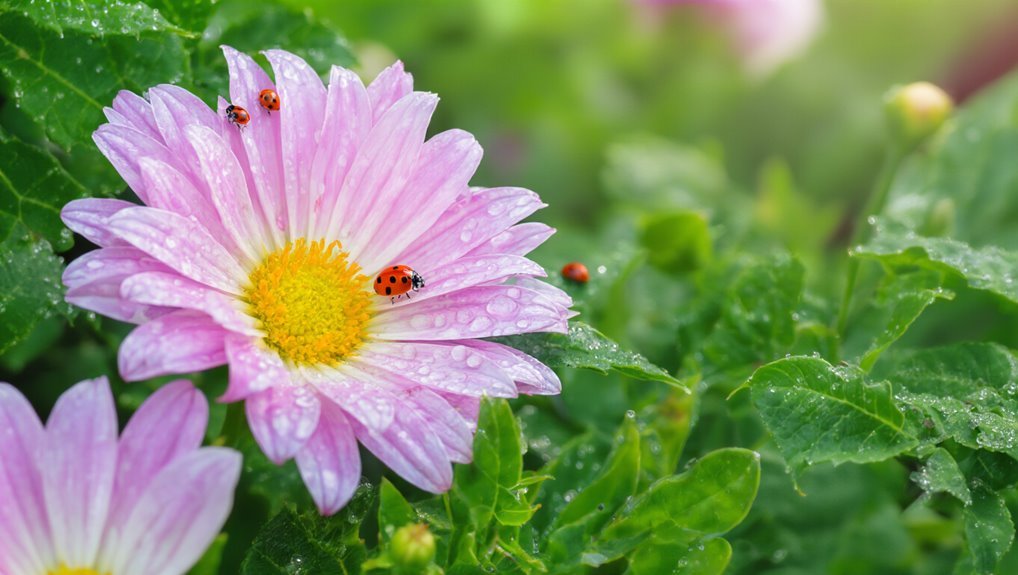
Even with the right sunlight and location, pests and diseases can threaten your flowers’ health. To protect your blooms, keep a close eye on your plants. Inspect leaves and stems regularly for any signs of damage or discoloration.
If you spot pests, like aphids or spider mites, act quickly. You can use insecticidal soap or neem oil for a natural approach. Encourage beneficial insects, like ladybugs, which can help keep harmful pests at bay. Many gardeners find success with organic pest control solutions that are both effective and environmentally friendly.
Maintaining good air circulation and avoiding overhead watering can also prevent diseases. Make sure to remove any dead or diseased plant material promptly.
For persistent infestations, consider using pest control products designed specifically to target common garden pests while minimizing harm to your flowers.
Pruning and Deadheading for Continuous Blooms
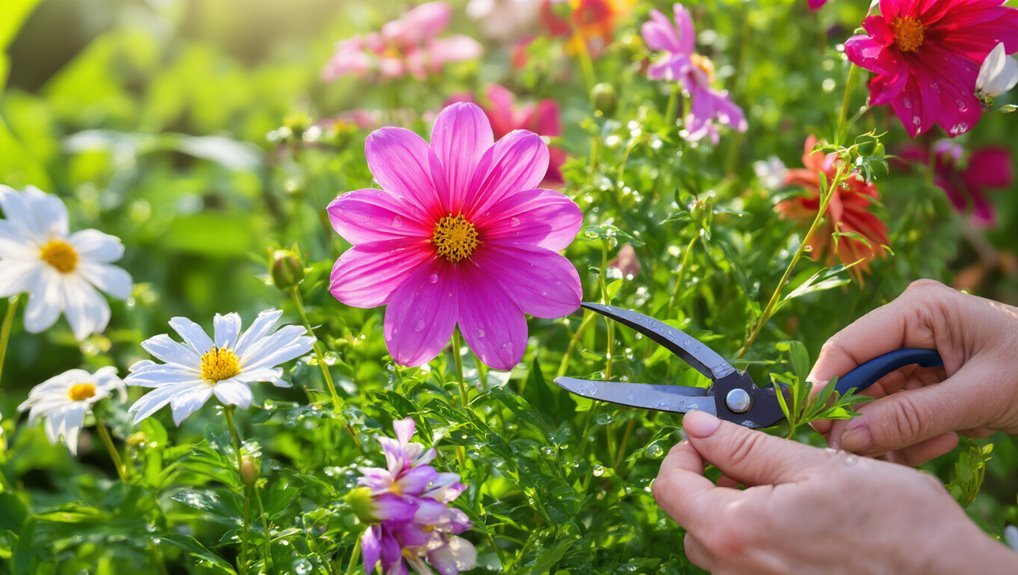
To keep your flowers blooming continuously, regular pruning and deadheading are essential practices you shouldn’t overlook.
Deadheading involves removing spent blooms to encourage your plants to produce new flowers. By cutting off faded flowers, you redirect energy from seed production back into growth and blooming. Use clean, sharp tools to make precise cuts just above the first set of healthy leaves or buds. For best results, utilizing a gardening tool set that includes various cutting and trimming tools can make the deadheading process more efficient and effective.
Pruning, on the other hand, helps maintain shape and health. Trim back overgrown stems and remove any dead or diseased foliage to promote airflow and sunlight penetration.
Aim to prune during the growing season when plants are actively thriving. For best results, consider using essential pruning shears designed specifically for gardening tasks to ensure clean cuts and healthy growth. With consistent deadheading and pruning, you’ll enjoy a vibrant garden full of beautiful blooms throughout the season.
Fertilization Strategies for Healthy Plants
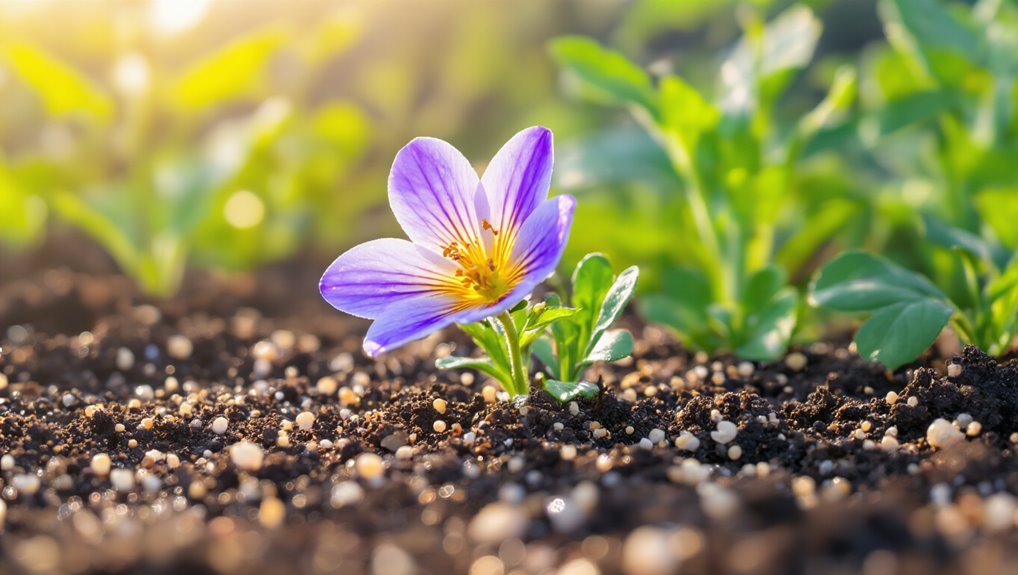
Fertilizing your plants is crucial for ensuring they thrive and produce abundant blooms. To achieve the best results, consider using a balanced fertilizer with equal parts nitrogen, phosphorus, and potassium. You can also opt for organic options like compost or well-rotted manure, which enrich the soil naturally. For even healthier soil and improved moisture retention, consider adding organic mulching materials such as straw to your garden beds.
Here’s a quick guide to help you choose the right fertilization strategy:
| Fertilizer Type | Application Frequency | Best For |
|---|---|---|
| Granular | Every 4-6 weeks | Established plants |
| Liquid | Every 2-4 weeks | Potted plants |
| Organic compost | Once per season | All types of flowers |
For optimal results, explore the benefits of using the best plant food options specifically designed to nourish your plants throughout their growth cycle. Adjust your approach based on your plants’ specific needs, ensuring they get the nutrients essential for vibrant growth and flowering.
Creating a Supportive Environment for Growth
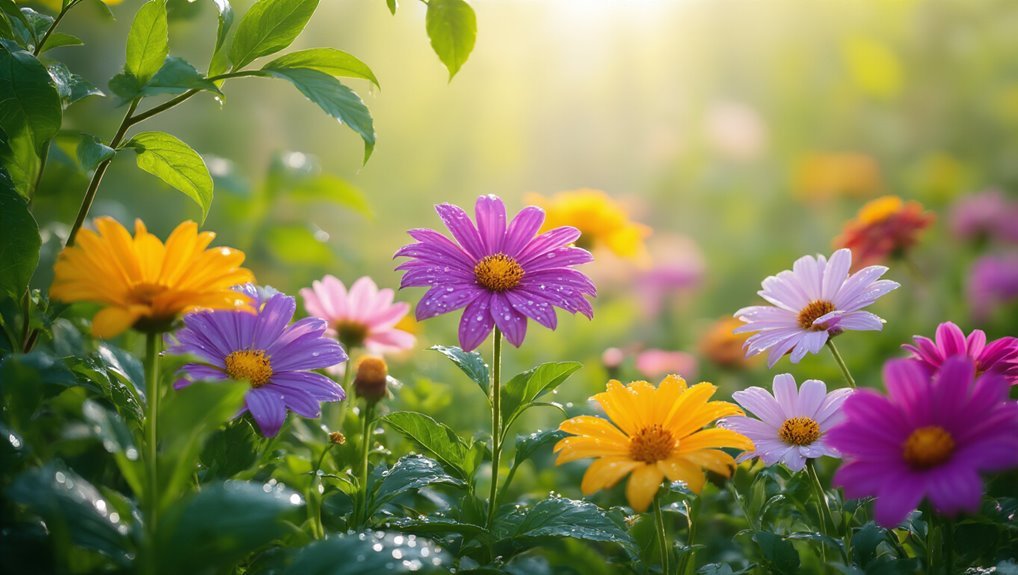
Creating a supportive environment for growth is essential if you want your flowers to flourish.
Begin by choosing the right location; ensure they receive adequate sunlight while protecting them from harsh winds. Soil quality matters too. Use well-draining soil rich in organic matter to provide essential nutrients.
Regular watering is crucial, but avoid overwatering—flowers don’t like soggy roots. For even more convenience, many gardeners rely on garden sprinkler timers to ensure consistent and effortless watering.
Consider the temperature and humidity levels; most flowers thrive in moderate conditions. Additionally, keep an eye out for pests and diseases, addressing any issues promptly.
Finally, remember to give your flowers space to grow freely, allowing air circulation.
By creating this nurturing environment, you’ll set the stage for vibrant blooms and healthy plants.
For efficient and consistent watering, consider installing a drip irrigation system to help maximize your garden’s potential.
Happy gardening!
Frequently Asked Questions
How Do I Know When to Plant My Flowers?
You should plant your flowers when the risk of frost has passed and the soil temperature consistently reaches at least 60°F. Check local weather forecasts and consider your specific flower varieties for optimal timing.
Can I Grow Flowers Indoors Successfully?
You might think growing flowers indoors is tough, but it’s definitely doable! Choose the right varieties, provide adequate light, and maintain proper humidity. With care, your indoor garden can thrive and bring joy year-round.
What Are Companion Plants for Flowering Species?
Companion plants for flowering species include marigolds, which deter pests, and basil, which enhances flavor. You’ll find that planting them together boosts growth, attracts beneficial insects, and creates a vibrant, thriving garden ecosystem.
How Can I Encourage More Blooms From My Flowers?
To encourage more blooms from your flowers, ensure they receive adequate sunlight, water them consistently, and apply a balanced fertilizer. Regular deadheading and maintaining healthy soil will also promote vibrant, abundant blossoms throughout the season.
Are There Specific Flowers That Bloom Year-Round?
Like a painter’s palette, some flowers, such as geraniums, petunias, and bougainvillea, can bloom year-round. You’ll find their vibrant colors brighten your garden, bringing life and joy, no matter the season.
Conclusion
In the world of gardening, patience is a virtue. By understanding the life cycles of your flowers and providing them with the right conditions—soil, water, sunlight, and care—you’ll witness their vibrant blooms unfold. Remember, a little effort goes a long way in nurturing your plants. With the right techniques and a supportive environment, your garden can thrive, transforming into a stunning display of color and life. Embrace the journey, and watch your flowers flourish.
